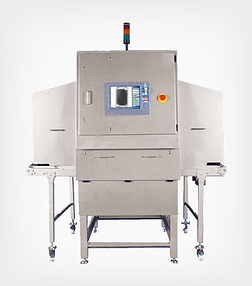 Food inspection has become an essential element in food production. Contamination of food with any impurities may cause serious repercussions to your business with safety programs such as Hazard Analysis and Critical Control Point (HACCP). This is because of the product liability law which states that every food producer is liable for any contamination of the products they make if a consumer gets harmed. Regular rubbers and plastics can also pass through inspection radars—which can cost you dearly.
Food inspection has become an essential element in food production. Contamination of food with any impurities may cause serious repercussions to your business with safety programs such as Hazard Analysis and Critical Control Point (HACCP). This is because of the product liability law which states that every food producer is liable for any contamination of the products they make if a consumer gets harmed. Regular rubbers and plastics can also pass through inspection radars—which can cost you dearly.
To avoid such problems, you can use a system for contaminant inspection. X-ray food inspection systems are used to identify contaminants such as ceramics, glass, stones, or any other similar materials that have a different concentration from the product under investigation. Ideally, you need a 24/7 on-site x-ray system that will help you inspect, certify, and also reclaim your production. This x-ray machinery is necessary because it will help you to keep your clients happy and safe, and also help you avoid thousands of dollars in lost production.
Tracing Contaminant Products Using an X-Ray Product Inspection
As a food producer, being able to trace any contaminated package from its point of origin is necessary to minimize any future reoccurrence. Tracing a single product can be a big challenge for food producers; however, being able to trace such a package will help you avoid further contamination and to avoid such a risk in future.
Types of X-Ray Technology
There are two types of x-ray systems that are used in the food inspection industry today, and they include dual energy and single energy. One of the myths that many food manufacturers believe is that the dual energy x-ray machines are always the best to use in the food processing industry; however, this isn’t necessarily the case depending on the product you're making and the most common contaminants you have to deal with.
When Should You Use the Single Energy X-Ray Technology?
There are a few factors that determine when to use the single energy x-ray technology and they include:
- Contaminants that you may encounter during manufacture
- Type of packaging
- The production speed
- Client conditions
Contaminants That You May Encounter During Manufacture
In case you manufacture food products that have a homogenous texture such as yogurt and butter, then single energy x-ray technology will give you exceptional detection levels of contaminants such as ferrous and non-ferrous metals, stainless steel, mineral stone, calcified bone, glass, plastics, and rubber.
Type of Packaging
Although you may have inspected for any contaminants before packaging, it may also be necessary to inspect again after packaging. Depending on the type of packaging material - such as bottles and glass jars - it may be difficult to inspect. This is because glass is a primary contaminant. In such a situation, you can use a single energy X-ray machine to inspect a glass jar package where the main contaminant can be glass. The single x-ray technology can also be used to inspect unpacked foods and those that are packed using a variety of packaging types, for instance, ceramic containers and metal, carton boxes, plastic containers, trays, sacks or bags, and tubes.
The Production Speed
Single x-ray technology is mainly suitable for high-speed applications such as flow-wrapped products and metal cans. According to Eagle, single energy x-ray technology is suitable for most of the packaging lines that travel at high speeds of between 150 feet to 400 feet per minute. Some of the EAGLE X-ray systems that you can consider include: Eagle Pack 240XE, 240, 320, 430, 720, and 1000.
Client Conditions
The requirements of your clients will also determine the x-ray systems that you will adopt. For instance, if your clients need suppliers that have the capacity to inspect contaminants that are as small as .4mm, this means you need a single energy x-ray technology.
The latest single energy x-ray systems that you can use in your business is the Eagle PI X-ray system that is operated by Eagle food safety technicians from Plan Automation. This system can be used to inspect the following:
- Meat and poultry
- Food and beverage
- Consumer goods
- Cosmetics and pharmaceuticals
- Industrial
If you don’t want to invest the capital needed to purchase an x-ray inspection machine, then you can take advantage of the rental service where you can use the machine at your location.




